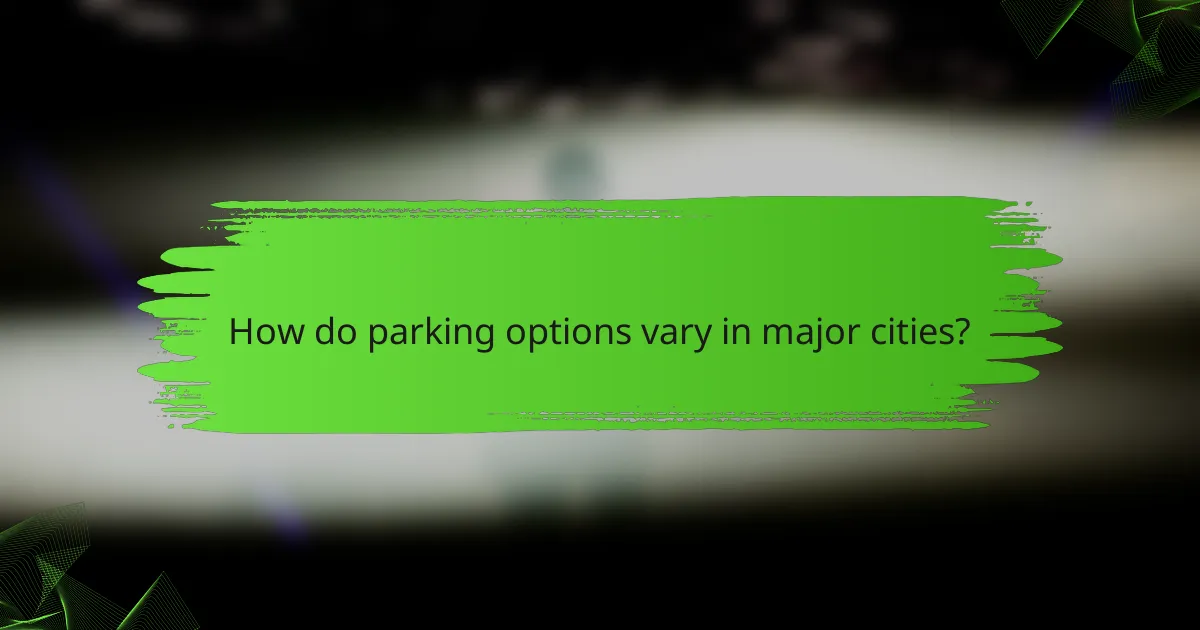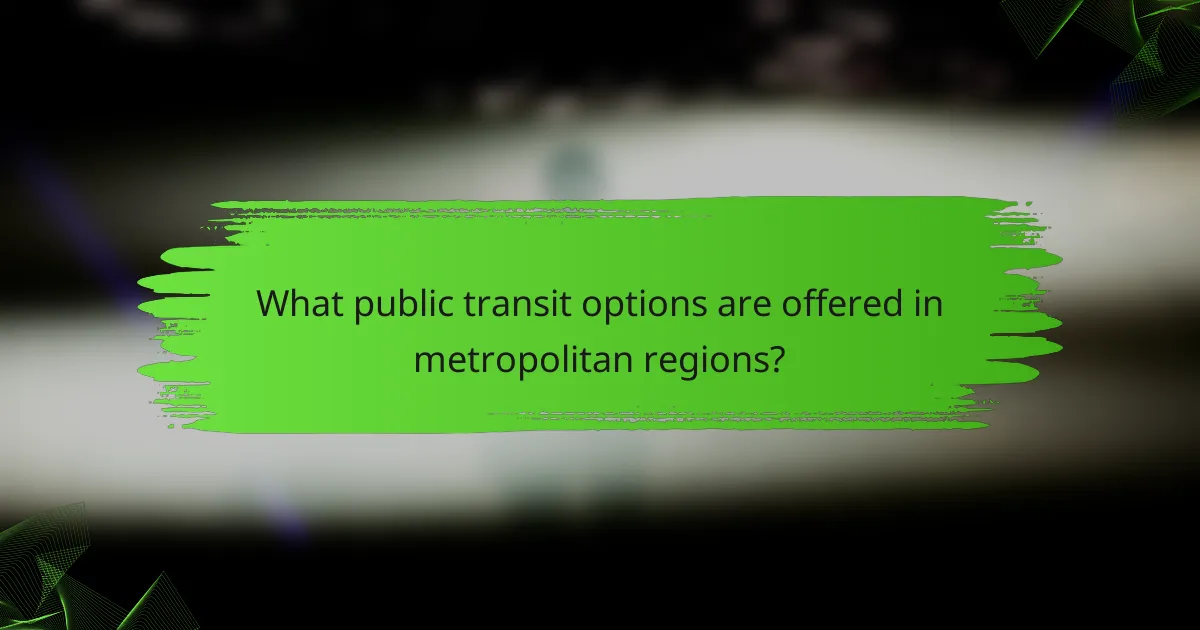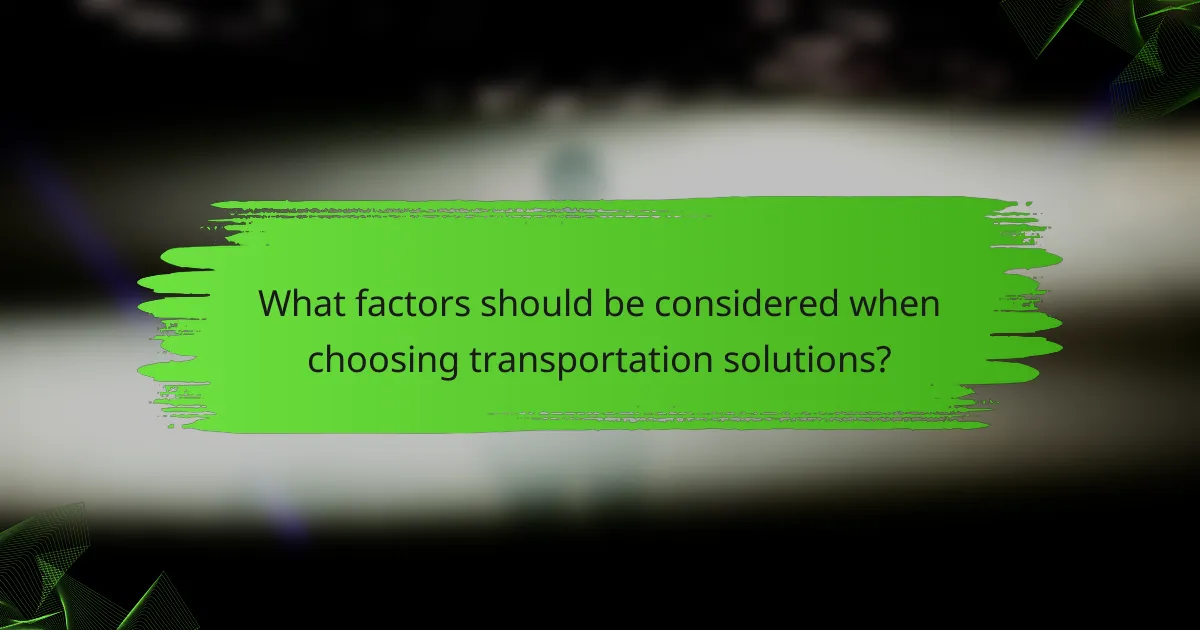Transportation solutions in urban areas encompass a range of options, including shuttle services, parking facilities, and public transit systems. Shuttle services cater to diverse needs, from airport transfers to corporate travel, while parking options vary from on-street to garage facilities, each offering unique benefits. Additionally, public transit, such as buses and subways, plays a crucial role in enhancing mobility and providing affordable travel alternatives for both residents and visitors.

What shuttle services are available in urban areas?
Urban areas typically offer a variety of shuttle services to facilitate transportation for residents and visitors. These services include airport shuttles, hotel shuttles, corporate shuttles, and shared ride shuttles, each catering to specific needs and providing convenient options for getting around.
Airport shuttle services
Airport shuttle services provide transportation between airports and various locations within the city, such as hotels or business districts. These shuttles often operate on a fixed schedule and can be booked in advance or found at designated pick-up areas at the airport.
When using airport shuttles, consider factors like travel time, cost, and convenience. Prices typically range from $10 to $30 per person, depending on the distance and service provider. It’s advisable to check reviews and schedules to ensure reliability.
Hotel shuttle services
Many hotels offer complimentary shuttle services to and from nearby attractions, airports, or business centers. These shuttles enhance guest convenience and can save on transportation costs.
To utilize hotel shuttle services, confirm availability and operating hours with the hotel prior to your stay. Some hotels may require reservations, while others operate on a first-come, first-served basis. Always check if there are any additional fees involved.
Corporate shuttle services
Corporate shuttle services are designed for businesses to transport employees between offices, client sites, or events. These services can be customized to fit specific schedules and routes, enhancing productivity and reducing commuting stress.
Companies often partner with shuttle service providers to ensure safety and efficiency. When considering corporate shuttles, evaluate factors such as capacity, frequency, and cost-effectiveness to determine the best solution for your organization.
Shared ride shuttle services
Shared ride shuttle services allow multiple passengers to share a ride, reducing costs and environmental impact. These services typically operate on a flexible schedule and can be booked through various apps or websites.
When using shared ride shuttles, be prepared for potential wait times as the shuttle picks up and drops off other passengers. Prices generally range from $15 to $25 per trip, making it a budget-friendly option for travelers. Always check the pickup locations and estimated travel times before booking.

How do parking options vary in major cities?
Parking options in major cities can differ significantly based on location, demand, and local regulations. Generally, cities offer a mix of on-street parking, off-street parking garages, and valet services, each with its own advantages and considerations.
On-street parking
On-street parking is commonly available in urban areas, often regulated by local authorities. Rates can vary widely, typically ranging from a few dollars per hour to higher fees in busy districts. Time limits are usually enforced, so it’s essential to check signage to avoid fines.
Many cities use parking meters or mobile apps for payment, which can simplify the process. However, finding a spot can be challenging during peak hours, so plan accordingly or consider alternative transportation during busy times.
Off-street parking garages
Off-street parking garages provide dedicated spaces away from the street, often offering more security and convenience. Rates for these facilities can vary, with daily rates typically ranging from $10 to $30, depending on the location and demand.
Some garages offer monthly passes, which can be a cost-effective option for frequent visitors. It’s advisable to check for height restrictions and availability, especially in cities with larger vehicles or during events.
Valet parking services
Valet parking services are often available at hotels, restaurants, and event venues, providing a convenient option for those who prefer not to search for parking. This service usually incurs an additional fee, which can range from $5 to $20, depending on the establishment and location.
While valet parking offers ease, it’s important to consider wait times for vehicle retrieval, especially in busy areas. Always confirm the valet service’s insurance coverage and any potential liability issues before handing over your keys.

What public transit options are offered in metropolitan regions?
Metropolitan regions typically provide a variety of public transit options, including bus services, subway systems, and light rail services. These options are designed to enhance mobility, reduce traffic congestion, and offer affordable travel alternatives for residents and visitors.
Bus services
Bus services are a common and flexible public transit option in metropolitan areas. They operate on fixed routes with scheduled stops, making them accessible for most neighborhoods. Buses can vary in frequency, with some routes running every few minutes during peak hours and others operating less frequently.
When using bus services, consider purchasing a transit pass for savings on multiple rides. Many cities also offer real-time tracking apps, allowing passengers to check arrival times and plan their trips more efficiently.
Subway systems
Subway systems provide rapid transit options beneath city streets, allowing for quick travel across longer distances. They typically feature dedicated tracks and frequent service, making them a popular choice for commuters. Subways can significantly reduce travel time compared to surface transportation.
To navigate subway systems effectively, familiarize yourself with the map and schedule. Most systems offer monthly passes that can save regular riders money, and many stations are equipped with escalators and elevators for accessibility.
Light rail services
Light rail services combine elements of streetcars and subways, operating on tracks that may be shared with other vehicles or dedicated lanes. They often connect suburban areas to urban centers, providing a convenient option for commuters. Light rail systems usually have fewer stops than buses, allowing for faster travel times.
When considering light rail, check the operating hours and frequency, as some lines may have limited service during off-peak times. Many cities offer integrated ticketing systems that allow for seamless transfers between light rail, bus, and subway services, enhancing overall connectivity.

What factors should be considered when choosing transportation solutions?
When selecting transportation solutions, consider cost, convenience, and travel time. Each factor plays a crucial role in determining the overall effectiveness and efficiency of your chosen method.
Cost-effectiveness
Cost-effectiveness is a primary consideration when evaluating transportation options. Analyze both direct costs, such as fares or parking fees, and indirect costs, like time lost or convenience. For instance, shuttle services may have a higher upfront cost but save on parking fees and fuel.
Compare the total expenses associated with each option. Public transit often offers lower fares, while private shuttles might provide a more comfortable experience at a premium. Always factor in potential discounts or passes that can reduce overall costs.
Convenience and accessibility
Convenience and accessibility significantly impact the choice of transportation solutions. Assess how easily you can reach your destination using various methods. Public transit may have limited routes, while shuttle services often provide door-to-door service.
Consider accessibility for individuals with disabilities or those traveling with children. Some shuttle services are equipped to accommodate special needs, while public transit may require additional planning. Evaluate the proximity of stops and availability of services during your travel times.
Travel time
Travel time is a critical factor in selecting transportation solutions. Determine the estimated duration for each option, factoring in potential delays. Shuttle services may offer a faster route during peak hours compared to public transit, which can have multiple stops.
Use apps or websites to check real-time travel estimates and plan accordingly. If time is of the essence, prioritize options that minimize waiting and transit times. Always consider the trade-off between cost and speed to find the best solution for your needs.

How do shuttle services compare to public transit?
Shuttle services typically offer more direct routes and convenience compared to public transit, which often follows fixed schedules and routes. While shuttles can provide door-to-door service, public transit is generally more cost-effective and accessible for a wider range of users.
Flexibility of schedules
Shuttle services are designed to be more flexible, often adjusting their schedules based on demand or specific events. This means they can operate at varying times and frequencies, making them ideal for travelers with unpredictable itineraries.
In contrast, public transit operates on fixed schedules that may not accommodate last-minute changes. Buses and trains typically run at set intervals, which can range from every few minutes to several hours, depending on the location and time of day.
For example, a shuttle service at an airport might run every 30 minutes during peak hours, while public transit buses may only run every hour during off-peak times. When choosing between the two, consider your schedule and how much flexibility you need.



